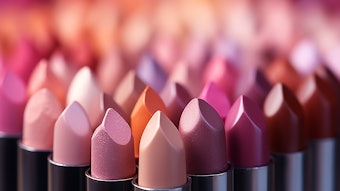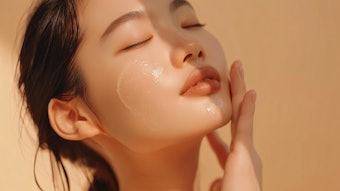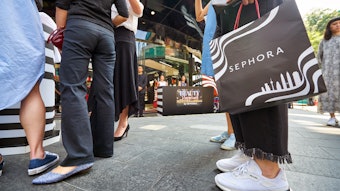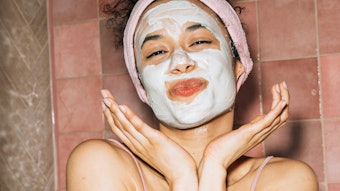Read more about the turbulence in emerging markets here.
The good news is that emerging market consumers are still spending plenty of cash on beauty and personal care. Value sales across emerging markets were up almost 10% in 2014 over the previous year at fixed U.S. dollar prices, according to new data from Euromonitor International.
The bad news is that annual growth failed to reach double-digit levels for the first time in more than a decade. This may be the start of an era of more subdued emerging market demand.
More subdued future growth makes sense. Emerging markets’ sales performance has been in a state of flux over 2013–2014, as global beauty and personal care brands battle with a more reticent China, a more cash-strapped Brazil and a more inward-looking Russia. However, the situation is set to worsen.
Latin America is teetering on the edge of recession, Eastern Europe is in conflict, the Middle East and Africa are in varying degrees of upheaval, and emerging Asia is losing its economic dynamism. In addition, currency instability in key countries such as Brazil, Mexico, Turkey and South Africa is creating havoc in terms of strategic planning.
These factors will conspire to turn former safe havens of growth into hotbeds of uncertainty. It is true that emerging market growth in 2014 was still much stronger than the 2% growth in developed markets.
However, developed markets are starting to look like a safer investment target than emerging markets over the next five years. Indeed, in a pendulum swing that few in the industry saw coming, developed markets and the United States in particular could soon be outperforming emerging markets in key industry categories.
Single-digit Growth is the New Norm in China
China has been a magnet for beauty industry investment over the last decade, spurred on by the country’s rapid economic growth. However, Western companies with significant Chinese exposure, such as Procter & Gamble, L’Oréal and Unilever, are not sitting as pretty as they were three years ago.
Sales are still growing, reaching $48 billion in 2014, with growth of 7% from 2013. However, this was the third consecutive year of slower growth, according to Euromonitor International. This is not only due to economic issues. Yes, China’s juggernaut economy is slowing, but the consumption culture of China’s mid-income consumers is also changing.
Gone are the days when Chinese consumers would buy a shampoo, fragrance or lipstick simply because the brand offered Western credentials. The urban mid-income group is now more discerning and, to an extent, wary of Western brands.
This wariness is rooted in a government crackdown on extravagance, which was aimed primarily at government officials with a taste for fine wines and luxury watches, but which has morphed into a wider societal rebuff of showy brands. There is also a growing undercurrent of perception that Western brands do not always match Chinese tastes and requirements.
It is telling, perhaps, that some of the beauty industry’s strongest performing imports in China over 2013–2014 came not from France or the United States, but from South Korea. This reflects a strong Chinese affinity with South Korean soap operas and popular music.
Consumers Trade Down in Brazil as Economy Implodes
Brazil’s beauty industry grew even faster than China’s over the last decade in absolute terms. It continues to flout strong external signs of growth, with beauty and personal care retail sales growing 11% in 2014 over the previous year at fixed U.S. dollar prices.
However, growth was slower in comparison to the preceding two years, with 14% and 16% growth in 2013 and 2012, respectively. It is also hard to see how growth will avoid a further drop in 2015, as the Brazilian economy teeters on the brink of recession.
One of the problems for the beauty industry is that mid-income Brazilians, a linchpin of demand over the last decade, have grown used to prestigious possessions such as smartphones, satellite TVs and cars. Many are even investing in their children’s private education. As spending power weakens, these are the types of products and services most households will want to retain for as long as possible.
Inevitably, that means savings will have to be made in other areas. Will beauty and personal care be among the casualties? They might be. At the very least, there is likely to be much stronger trading down by consumers in product categories such as hair care, deodorants and men’s grooming.
India: the New China?
India was one of the best performing emerging markets for beauty and personal care in 2014, with retail sales climbing 15% from 2013. Among the major emerging markets, India also has some of the best growth prospects over the next five years. As a major oil importer, India’s economy is notably being boosted by cheaper oil prices. This will filter though into the pockets of increasingly beauty-conscious urban consumers. These trends thus bode well for fast growing beauty and personal care categories such as deodorants, color cosmetics and men’s grooming.
A Pendulum Shift in the Making
Over the last decade, the beauty industry relied heavily on emerging markets to shore up worldwide growth. This trend continued in 2014, but the once cavernous gap in growth between emerging and developed markets could now start to narrow, fueled by resurgent consumer confidence in the United States and some Western European countries.
Growth in emerging markets has not run its course. However, a long period of double-digit U.S.-dollar growth has finally fizzled out, and moderate growth is set to be the new norm in key countries such as China and Brazil.
As a result, strategic planning for leading global players is likely to see major revision over the next three years, with a stronger investment focus on developed countries. For brands that get the mix right, the global impact should not be too bad.










